Bob's Lost In Space B9 Robot Project | home
Misc. Parts | Motor Shaft Extensions | Knees & Hinges | Treadsections | Tread Making | TreadMaking from Tires | Drive Parts | Drive & Tread Installation | Tread movie | Barry's Tread Movies | Drive Upgrade | Legs | Donut & Waist plate | First Stackup | Torso | Neon | Arms | Microphone & Knob | Chest Buttons | Power Pack | Torso Vents Misc | Making Vents | Large Vent Drawings | Arm Mechanism #1 | B9 Arm Mech Dev. | Wrists & Claws | Collar | Radar | Motorizing Ears | Making Sensors | Brain | Brain Cup & Light Rods | Bulbs & Wiring Diagrams | My Old Robots | B9 Builder's & Info Sites | Related Links | Building Reference Info | Parts Drawing Links | Site Revisions | Final Leg Assembly | Leg & Hip Assembly | Leg-Hip Action | Non-B9 Projects | 2008 TX BUILD-OFF | 2008 TX BUILD-OFF PAGE 2 | RoboCon 2009
Helpful info
Decimal Equivalent
& Drill Size Chart
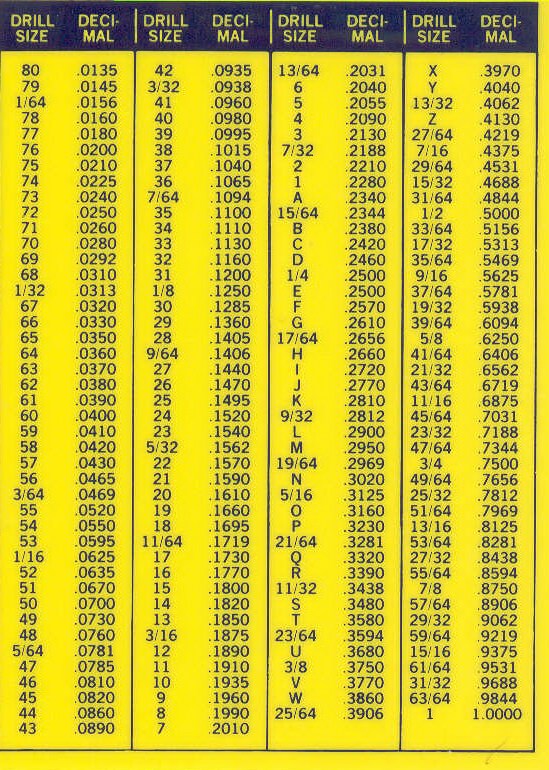
To convert mm dimensions to inches, divide mm by 25.4

I use a simple jig of plywood scrap clamped to the bandsaw table. You can cut circles larger diameter than the throat of your bandsaw, since the plywood can extend as far to the right of the blade as it needs to for the radius you are cutting.
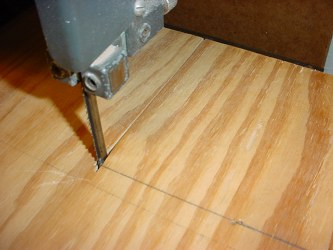
Cut in to approximately the center of the plywood and slightly enlarge the slot around the saw blade. This keeps the blade from binding on the plywood when you are cutting circles. Draw a line perpendicular to the front edge of the blade for the length of the board. This is the center line for the circle radius.

Line up a center line of the piece you are going to cut with the front edge of the blade and the center line on the jig (seen at the bottom of this photo).
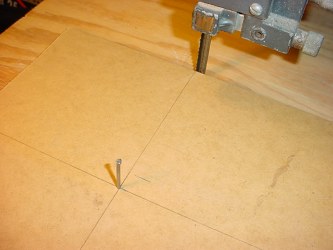
Measure the radius from the 'starting' side of the piece to cut. Drive a nail through the center of it into the plywood. It is best to use a piece of wood larger than the circle you need to cut. A pilot hole for the nail will make it easier, and of course in plastic you'll need it.

Slowly start rotating the piece into the blade to start the cut.
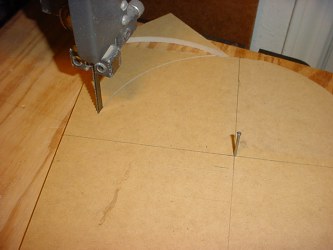
Continue turning the piece to cut the circle.

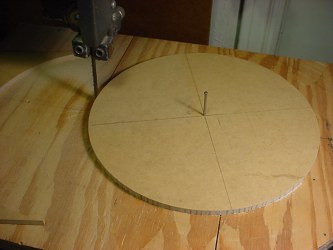
You can reuse the jig for circles of the same or different size, at least until your radius holes get too close together in the jig board and start interfering with placement of your center nail. I used this to cut all my donut parts, radar parts and many other non B9 circle cutting projects. You can cut wood, plastic, styrofoam, etc with this setup and an appropriate blade.
(Don't try cutting metal on your bandsaw, unless you have a metal cutting blade and the proper speed adjustment to slow the saw down for metal cutting. Otherwise you'll just take the teeth off the blade instead of cutting the metal.)